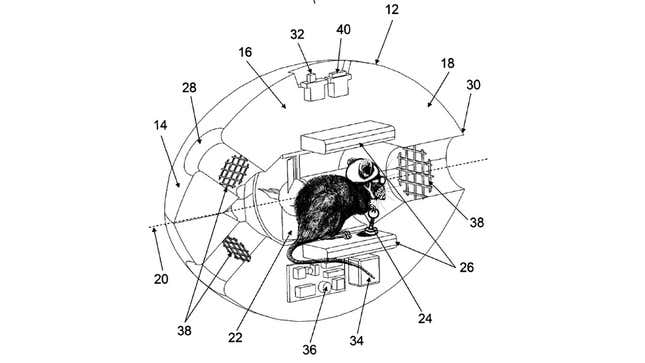
Welcome to Patentspin. I'll use this space to take a look at some strange or interesting patents related to the world of sports. I will then, probably, make fun of them.
In this edition, we're going to examine inventions that will, theoretically, let you throw or kick a football farther, if you don't mind looking like a weirdo in the process.
To begin: What in the hell is this?
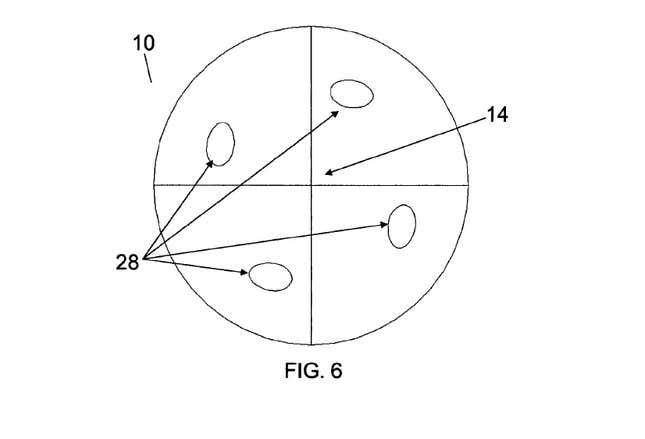
"The world's least ergonomic bowling ball?" you posit.
Good guess, but, no, it's related to football, remember? Here's another version of the same invention:
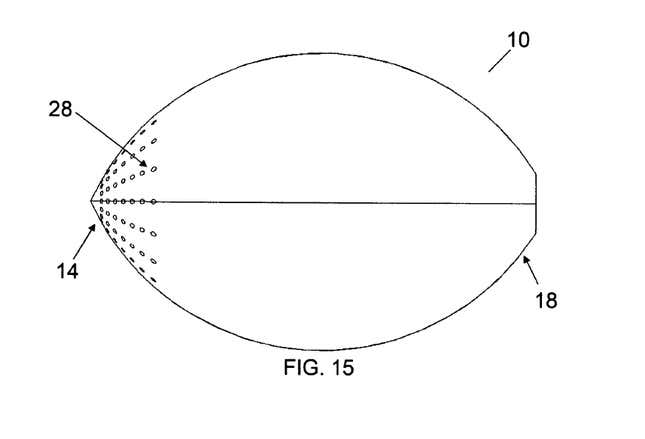
"That's one of those crappy football phones you could get if you subscribed to Sports Illustrated in 1987!"
Good memory, and getting closer, but still, no. Here's yet another version:
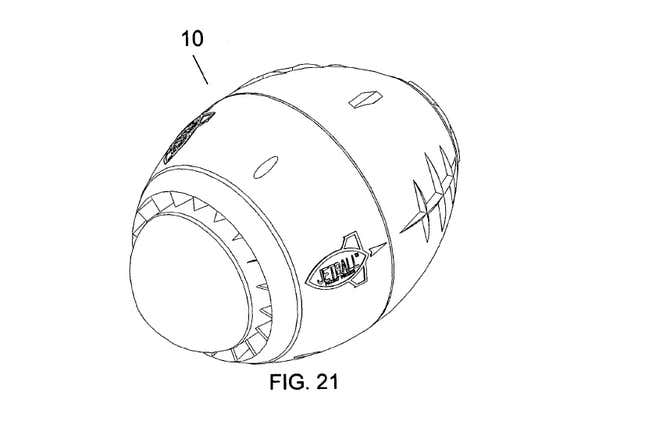
"Yeah, you could call Sports Illustrated to subscribe, and they'd send you one of those football phones! They had another one that looked like a sneaker, and—"
You're losing focus. So let's see what this actually is:
Self-propelled football with internally ducted fan and electric motor - US 8187126 B2
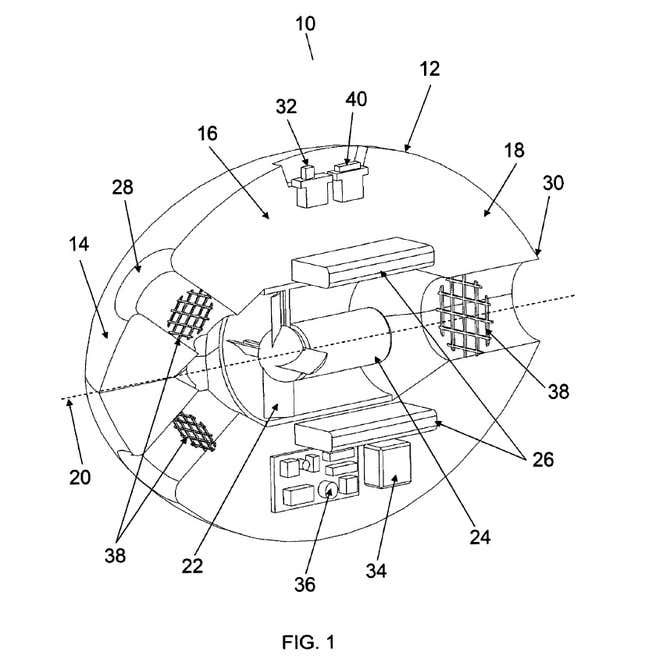
That's right. At long last, a self-propelled football. In the cross section you see above, the fan sits in the middle, draws air in through the vents at the front (the left side of the picture) and expels it from the back. The chamber in the middle of the football is not "where the mouse who controls it sits," as my wife suggested, and earnestly hoped.
An even better way of getting air into the football than these straight vents is shown here:

These vents are angled so as to maximize air intake when the ball is thrown in a spiral. Maybe some enterprising inventor could reverse the motor so that the air is expelled through these spiral vents, making it easier to throw a spiral, and then sell the ball to Tim Tebow so he can feel what it's like to throw a spiral.
Back to Figure 1, and the components labeled at the top and bottom of this abomination of a football: Obviously, you don't want the fan running all of the time, or it'll waste your battery. Battery life is important! As one way of solving this problem, 32 is an on-off switch, because when your QB takes a snap in your Jetball league, you want him to waste time fumbling around for the on-off switch. If that doesn't work for you, 34 is an accelerometer, which detects when the ball is being thrown or caught; this works with micro-controller 36 to start and stop the motor, as appropriate (it is not the mouse's control panel, for the last time—never mind the tiny tea set and dogeared copies of Country Living in there). 40 is a charging port, sending power to the lithium batteries 26.
If you're going to have a self-propelled football, I suppose that lithium batteries are the only feasible way to power the thing. I mean, you could try putting a gasoline-powered combustion engine in there, but that's completely ridic—
Engine-spiraled, stabilized football - US RE34383 E
Oh, come on.
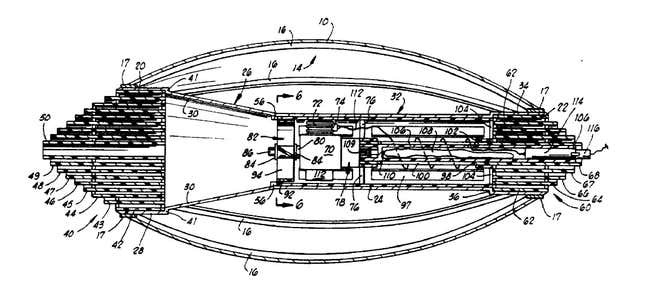
Yes, this is a combustion-engine powered football. The front end is the left side. The astonishing thing (well, one of them) is that this patent was first applied for in 1991, even though I thought we were well past the deathtraps-disguised-as-toys era of the 1950's and 1960's. This is what the fan-powered football's inventor had to say about it, in his patent application, to demonstrate the need for a self-propelled football that was NOT a flying explosive deathtrap:
Some have developed an engine-spiraled, stabilized football through an internal combustion engine. This football has the internal combustion engine located within the football that drives a propeller housed within a gyroscopic propeller ring. The internal combustion engine requires a fuel. Therefore, players must put into the football a combustible fuel, like gasoline. Combustible fuels and footballs don't go well with each other. Gasoline is a dangerous chemical that is not suited for a children's toy. Furthermore, an internal combustion engine produces heat which could present a fire hazard. The internal combustion engine could also burn a player when the football is handled. Compounding these dangers are the exhaust gases produced by the internal combustion engine. Playing with a football that emits toxic fumes is highly undesirable. Also, there is no control technology devised in the football that allows the football to easily self activate and deactivate when thrown. Therefore the engine must be started and left running while in use. Also, an external starter is needed to start the motor before the engine will operate. For all of the aforementioned reasons and others not discussed, the internal combustion engine should not be placed within a football intended for use by people, especially children.
Emphasis added, but really the whole goddamn thing demands emphasis.
After reading that, a battery-powered self-propelled football starts to seem like a downright reasonable alternative. Plus, imagine going to the nearest gas station and trying to buy 12 cents of gas for your "football." Homeland Security would be tackling you to the ground in about eight seconds, while you insisted that you weren't up to anything sinister, but merely had weak arms and an allergy to lithium batteries. Nooooooo thank you.
Suppose, instead of a bad quarterback, you were a bad field goal kicker. How could you improve your kicking distance? Somebody famous probably once said, "To be the best, you've got to copy the best." Who was, arguably, the best field goal kicker ever? Tom Dempsey, recordholder for the longest made regular season NFL field goal, at 63 yards (tied with Jason Elam, Sebastian Janikowski, and David Akers).
Here, from Wikipedia, are Dempsey's feet:
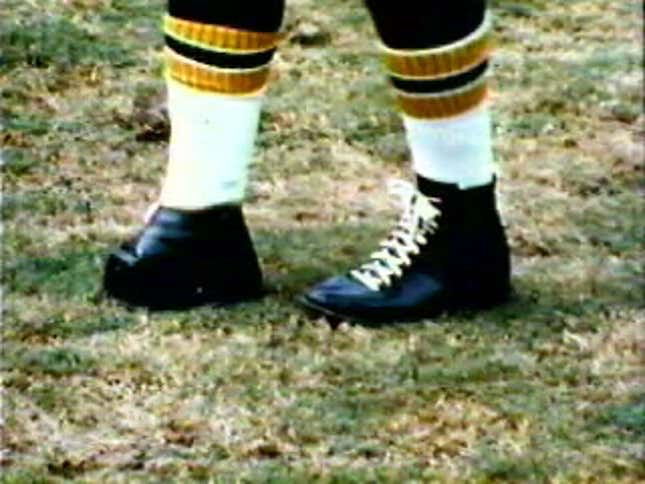
The more astute of you may notice that his right foot (his kicking foot) is more like a right six inches, with a large, forward-facing flat surface instead of, oh, his toes. (Dempsey was born without toes.) Some people thought that this flat surface gave him an advantage in kicking, and subsequently made shoes that would let them mimic Dempsey's foot, by functioning as some sort of reverse-prosthetic. Incidentally, there is supposedly a Sports Science clip showing that Dempsey did not gain an advantage from the shape of his shoe, but it appears to have been scrubbed from ESPN's site. Is this part of the NFL's anti-Saints conspiracy? Probably. Anyway, the Goodelluminati couldn't scrub this patent for a kicking shoe from the web. For now.
Field goal kicking shoe - U.S. 4149325 A
This is the claimed shoe:

What, exactly, did the inventor claim was the benefit?
The unitary ball-impacting surface provides for total, instantaneous impact between shoe and ball and eliminates the secondary and tertiary impact points which are set up between shoe and ball by the usage of the conventional field goal kicking shoe. With such total, instantaneous impact between shoe and ball, both the kicking distance and the initial lift imparted to the ball are enhanced. The unitary, forwardly inclined, ball-impacting surface also provides for greater kicking accuracy.
That flat surface hits the ball so gently, smoothly, and instantaneously in Figure 3 that the ball barely knows it's been hit. Especially compared to this horrifying prior art shoe, from the Bhagavad Cleata, the Destroyer of Balls:
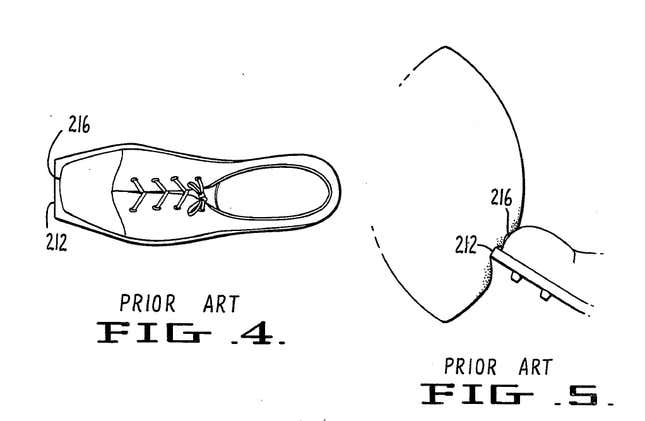
Figure 5 looks incredibly unpleasant for that football, yessir. It's all smushed! What an unsmooth and non-instantaneous nightmare! There's still something missing, though. ... Of course! This is the next natural evolution in kicking shoes, if you want a large frontal surface:

There's barely a lip, with a huge, flat surface, so you're going to get great accuracy without the second or third impact that cuts down your distance. Sadly, the NFL rulebook is a huge downer when it comes to kicking shoes, in Rule 5, Section 4, Article 2, paragraph (g):
Kicking shoes must not be modified (including using a shoelace wrapped around toe and/or bottom of the shoe), and any shoe that is worn by a player with an artificial limb on his kicking leg must have a kicking surface that conforms to that of a normal kicking shoe.
So, no using the Air Bud defense of "There's nothing in the rulebook that says we can't kick field goals with enormous, high-heeled clown shoes with a bow on them!" to finally see the 64-yarder in a regular season NFL game. However, if you want to invent something NOT specifically addressed by the NFL rulebook, there's at least one uncharted market:

Get on that, Dean Kamen.
Image by Jim Cooke